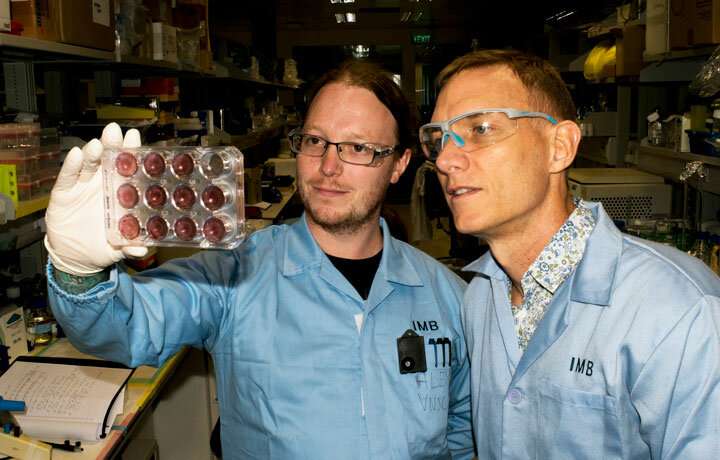Sweetening the deal on bone repair

By replacing or replenishing injured tissue with biomimetic structures, scientists can help initiate stem cell-driven repair cascades throughout the body. Insights from an A*STAR-led study of the interactions between bone growth proteins and sugar analogues of the tissue components could lead to new bone repair methods.
Repairing bone tissue hinges on the action of bone morphogenetic proteins (BMPs), a family of cell signaling proteins that regulate numerous cellular processes in the body. Specifically, BMPs control key developmental processes, such as skeletal development. They can also induce bone formation and regeneration in adults. This makes them appealing for treatment in cases where the normal healing process is stalled or delayed.
BMP signaling relies on first coupling to the sugar heparan sulfate, a tissue component that often gets damaged during bone injury. Specifically, the linear polysaccharide, whose sugar chains are anchored to the extracellular matrix or cell surface, binds proteins and cell receptors to form signaling complexes that instruct stem cell fates and drive reparative cascades within tissues. However, the mechanics behind these coupling interactions, especially the contribution of the sugars to the stability, concentration, and configuration of the resulting complex, remain unclear. This lack of understanding has hindered the design of synthetic molecules that can bind and recruit the appropriate BMP receptor to the BMP signaling complex and, consequently, the development of tailored bone repair strategies.
To illuminate the interaction, a team led by Simon Cool and Raymond Smith from A*STAR's Institute of Medical Biology has devised a systematic approach that determines what elements are necessary for heparan sulfate to maximize the bone repair activity of the potent bone forming growth factor BMP-2, which is produced at bone injury sites. The researchers assessed how the structural features of smaller, more defined heparan sulfate-like structures regulate BMP binding and signaling. They evaluated the interactions of BMP-2 with heparan sulfate analogues, including heparin and several heparin-derived oligosaccharides of varying chain lengths and sulfate content.
"This work would allow us to create bone-relevant heparan sulfate variants with higher potency and tissue specificity by enhancing the actions of BMP-2 produced at bone injury sites," Cool says.
The team demonstrated that BMP-2 binding and BMP-2-mediated bone formation can be strongly enhanced by its complexing with heparan sulfate-like structures of defined size and charge. "This provides an opportunity to generate more bone tissue-relevant heparan sulfate structures and improve self-healing cascades," Cool says.
The binding assays revealed that the sugars needed at least ten-unit-long chains to effectively bind BMP-2. Longer chains also enhanced the thermal stability of the protein. Removing the sulfate groups, especially the amine-bound groups, decreased these stabilizing effects and, consequently, protein activity, demonstrating the importance of these functional groups.
In vitro and in vivo tests confirmed the influence of sugar chain length and sulfate functionalization on BMP-2-mediated bone repair. Specifically, chain lengths exceeding ten units were necessary to trigger cell responses comparable to that observed with heparin. Long oligosaccharides prolonged and maintained the BMP-2-induced signaling reactions in the cells. They also enhanced the transcription of osteogenic genes, which are responsible for driving new bone formation, as well as stem cell differentiation into bone precursors and mineralization. Moreover, sulfate-free oligosaccharides showed stunted BMP-2-induced differentiation.
These findings are key for next-generation heparan-based therapeutic strategies. "Such bio-inspired heparan sulfate materials can be readily formulated into scaffolds using advanced manufacturing practices to produce patient-customized bone implants," says Cool. He adds that, because heparan sulfate can be readily attached to various biodegradable polymers used in orthopedic surgery, his team is now fabricating bone implant materials with enhanced growth factor binding performance. These materials will be evaluated in various bone tissue repair models before plans for commercialization.
More information: Raymond A.A. Smith et al. Minimum structural requirements for BMP-2-binding of heparin oligosaccharides, Biomaterials (2018). DOI: 10.1016/j.biomaterials.2018.08.056

















